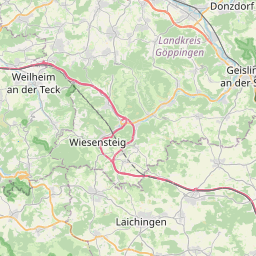






Description: General Information: Most of the research effort in understanding the processes controlling the observed ozone decline have concentrated on the polar vortex and on the interaction of the polar vortex with mid-latitudes. There are other regions that are also important for future prediction of ozone change where significant uncertainty exists. Two such regions are the tropics, where the transport between mid-latitudes and the tropics is a key unresolved issue, and the mid-latitude lowermost stratosphere, where the amount of transport from the troposphere into the stratosphere is uncertain. There is a clear requirement for validation and development of three-dimensional chemical transport models in relation to these regions. This is the objective of this proposal. The improvement of our modelling capability in these regions is necessary for assessing the impact of anthropogenic emissions on stratospheric ozone and other trace gases. In particular, it is important to understand the impact of CFCs and aircraft emissions. An accurate modelling capability for stratospheric ozone is vital for good policy decisions in the European Commission and for international protocols. The proposal brings together a number of European modelling groups who are at the forefront of stratospheric research. They will examine the behaviour of 3-dimensional chemical transport models (CTMs) in these two key regions. The sensitivity to CTM formulation and resolution will be addressed. The output from the CTMs will be validated against recently collected datasets. The CTMs will be integrated using either winds from European Centre for Medium Range Weather Forecasts (ECMWF) analyses or from dynamical models. The results of the CTMs using winds from a number of different dynamical models will be compared. The dynamical models will include a state-of-the-art global circulation model (GCM), a mechanistic middle atmosphere model, and a simplified GCM. This will indicate how well these dynamical models can capture the key transport processes. Perturbation experiments will be performed in the dynamical models to assess the effects on tracer transport of the quasi-biennial oscillation, aerosol radiative heating from volcanic eruptions, and increased amounts of greenhouse gases. This proposal will benchmark low-resolution CTMs, which can be used in multi-year ozone assessment studies, against much higher-resolution CTMs. Multi-year integrations will be performed to assess the impact of increased aircraft emissions on stratospheric ozone. Prime Contractor: University of Oxford, Department of Atmospheric, Oceanic and Planetary Physics Clarendon Laboratory; Oxford.
SupportProgram
Origins: /Bund/UBA/UFORDAT
Tags: Stratosphärisches Ozon ? Ozon ? Flugzeugabgas ? FCKW ? Atmosphärisches Aerosol ? Europäische Kommission ? Luftmassenaustausch ? Meteorologie ? Spurengas ? Tracer ? Wind ? Globales Klimamodell ? Aerosol ? Lufttemperatur ? Vulkanismus ? Wirbelschicht ? Flugzeug ? Klimamodell ? Modellversuch ? Chemikalien ? Stand der Technik ? Stratosphäre ? Studie ? Tropengebiet ? Troposphäre ? Vergleichsanalyse ? Wirkungsanalyse ? Zirkulationsmodell ? Emission ? Modellierung ? Mittlere Atmosphäre ? Benchmarking ? Luftverkehrsemission ? Verkehrsmodell ? Treibhausgas ? Internationales Übereinkommen ? Klimamonitoring ? Anthropogener Einfluss ? Globale Aspekte ? Forschungsprogramm ? Atmosphärenchemie ? Heizung ? Verkehrsemission ? Ausbreitungsvorgang ? Dynamische Analyse ? Chemische Kenngröße ? Mehrdimensionale Bewertung ? Auflösungsvermögen ?
Region: Baden-Württemberg
Bounding boxes: 9° .. 9° x 48.5° .. 48.5°
License: cc-by-nc-nd/4.0
Language: Englisch/English
Time ranges: 1998-01-01 - 1999-12-31
Accessed 1 times.